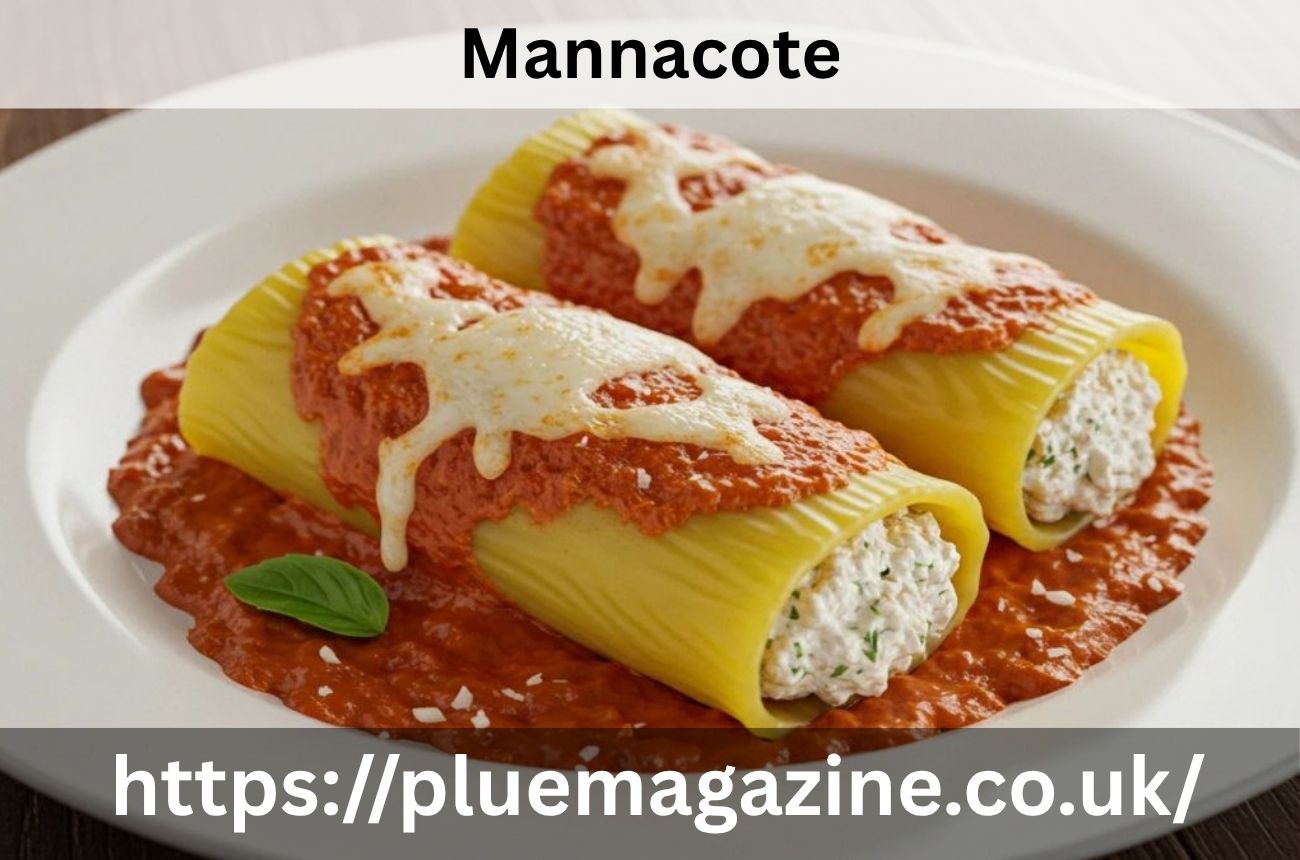Food
Mannacote and How to Avoid Them

The word Mannacote originally appeared in culinary circles as a playful reinterpretation of manicotti, the beloved Italian pasta tubes filled with ricotta. However, in 2024, researchers from a European bioengineering consortium adapted the term to describe a new micro-coating made from manna gum polysaccharides—hence “Manna-cote.”
This innovation aimed to preserve nutrients, regulate moisture, and enhance flavor or soil nutrient release. Thus, Mannacote became both a dish and a discovery—a bridge between traditional food and modern sustainability.
Scientific Discovery: The Bio-Coating Revolution
The newly discovered scientific version of Mannacote is not edible pasta but a bio-based encapsulation layer. It’s derived from natural tree exudates, rich in mannan sugars, and forms a thin barrier around food or fertilizer particles.
Researchers found that this biopolymer coating could slow oxidation, reduce spoilage, and even help soil fertilizers release nutrients steadily. This dual-use application is what propelled Mannacote into global research journals by mid-2025.
Culinary Reinvention: Mannacote as a Modern Dish
While scientists explored Mannacote in labs, chefs across the Mediterranean saw potential for a new version of stuffed pasta using manna-infused dough. This dough, high in fiber and mildly sweet, retained moisture and enhanced the flavor of savory fillings.
Culinary Mannacote became an innovation in sustainable gastronomy—using natural binders instead of synthetic stabilizers. It’s now served in eco-friendly restaurants that value low-waste, plant-based ingredients.
Agricultural Application: Mannacote as Smart Fertilizer

In agriculture, Mannacote has been used to coat fertilizer granules to regulate nutrient release. Traditional fertilizers often leach nutrients too quickly, polluting groundwater. The Mannacote coating helps release nitrogen, potassium, and phosphorus gradually.
This smart-release system improves soil fertility while reducing the need for frequent application. Farmers who tested Mannacote-based fertilizers in 2025 reported 20–30% better yield retention with 40% less environmental runoff—a remarkable leap toward sustainable farming.
Health Supplement Potential: Mannacote and Micro-Nutrition
Another new development involves Mannacote being tested as a delivery coating for micronutrients and probiotics. Its gentle digestive breakdown and water-binding capacity make it suitable for capsule production.
Clinical tests showed that Mannacote coatings could protect sensitive nutrients like vitamin C, iron, and probiotics from stomach acid, ensuring better absorption. This may reshape the supplement industry’s approach to bioavailability.
Misconceptions About Mannacote
The sudden rise of Mannacote led to several misconceptions online. Many people believe it’s simply a new pasta, while others think it’s a synthetic fertilizer. In truth, Mannacote is a family of bio-coating technologies and culinary innovations, unified by the use of manna-derived compounds.
The biggest misconception is that it’s artificial or chemically harmful. In reality, the active material is completely plant-based and biodegradable.
Common Mistakes in Using Mannacote Products
For farmers and food producers, improper application is a frequent issue. Applying Mannacote coatings too thickly can prevent adequate nutrient exchange or spoil texture in food.
Chefs sometimes overheat Mannacote pasta dough, destroying its natural polysaccharide structure. Manufacturers may mix it with incompatible chemical additives.
These errors diminish Mannacote’s effectiveness, making it essential to follow the specific temperature, pH, and thickness guidelines developed by researchers.
How to Avoid Mannacote-Related Problems
To avoid these problems:
-
Understand your purpose—culinary, agricultural, or nutritional—and use the corresponding grade of Mannacote.
-
Store correctly—keep the coating powder or dough base in cool, dry conditions.
-
Follow application ratios—for fertilizer coating, use only 2–5 microns thickness; for food, heat below 180 °C.
-
Avoid mixing synthetic emulsifiers that destabilize natural Mannacote polymers.
By adhering to these precautions, you’ll harness its full potential safely.
The Environmental Promise of Mannacote
The environmental implications of Mannacote are profound. Being biodegradable and renewable, it replaces petroleum-based coatings used in agriculture and packaging.
Early life-cycle assessments show that producing Mannacote requires 40% less energy and emits 30% fewer greenhouse gases than comparable polymer coatings.
If adopted widely, it could become a cornerstone of circular bio-economy strategies in both the food and fertilizer industries.
The Global Market Outlook for Mannacote

By mid-2025, Mannacote technology began attracting venture funding. Start-ups in Italy, Japan, and Australia have developed specialized Mannacote-coated fertilizers and food wraps.
Market forecasts predict that global Mannacote applications could surpass $800 million by 2028, as industries shift toward sustainable coatings.
Its unique blend of science and nature positions Mannacote as more than a fad—it’s a symbol of future-ready innovation.
Culinary Techniques for Perfect Mannacote
For chefs aiming to craft the perfect Mannacote pasta, precision is key. Mix manna extract with durum wheat flour, knead gently, and let it rest for 40 minutes. Fill with spinach-ricotta or lentil puree for a high-protein vegetarian meal.
Steam rather than boil to retain nutrients, then bake lightly with tomato-herb sauce. The result is a nutrient-dense, low-glycemic pasta with exceptional taste and texture.
Where Mannacote Research Is Heading
Researchers are now experimenting with nano-Mannacote—an ultra-thin coating that can deliver micronutrients directly to plant roots or human cells.
Preliminary data from 2025 suggests that nano-Mannacote could increase nutrient efficiency by 70%, revolutionizing sustainable agriculture and nutrition.
If proven safe, this discovery might reshape how humanity nourishes itself—balancing environmental health with technological progress.
Conclusion
Mannacote began as a culinary curiosity but evolved into a transformative technology. From enhancing food quality to improving soil health, it represents the intersection of tradition, innovation, and sustainability.
Avoiding Mannacote mistakes means respecting its natural chemistry and purpose. As we move toward greener industries and cleaner diets, Mannacote stands as a testament to how ancient materials can inspire modern solutions.

-

 Celebrity8 months ago
Celebrity8 months agoWho Is Elizabeth Buckley Harrold O’Donnell? A Closer Look at Lawrence O’Donnell’s Family
-

 Celebrity8 months ago
Celebrity8 months agoNathaniel Mandrell Dudney: Insights into Barbara Mandrell’s Family Life
-

 Celebrity8 months ago
Celebrity8 months agoWho Is Vera Davich? A Deep Dive into Her Life and Relationship with Scott Patterson
-

 Celebrity8 months ago
Celebrity8 months agoTalia Elizabeth Jones: Exploring Her Connection to Davy Jones















